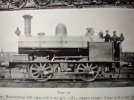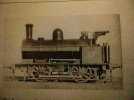Marc Dobson
Western Thunderer
At Scalefourum I picked up a London Road Models LNWR Webb 0-4-0ST kit from the bring and buy stand as I was under the impression that the LYR had 5 and I thought it would go nicely with a pug. However, when I have come to look at the instruction and online I can't seam to find any evidence of the LYR having any. Can anyone how is wise in these matters point me in the right direction? If they didn't have any it's still a nice loco.
Marc
Marc


